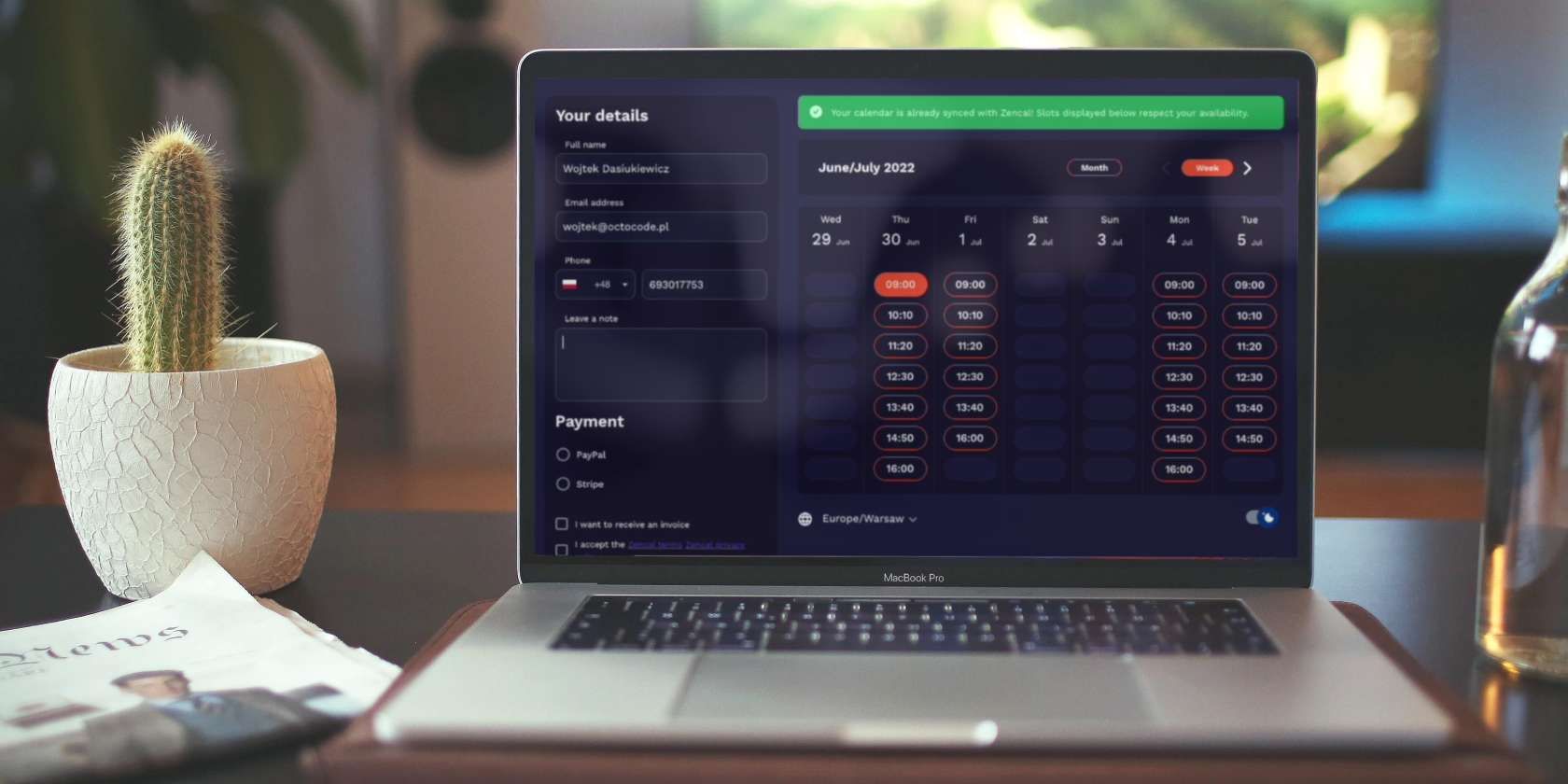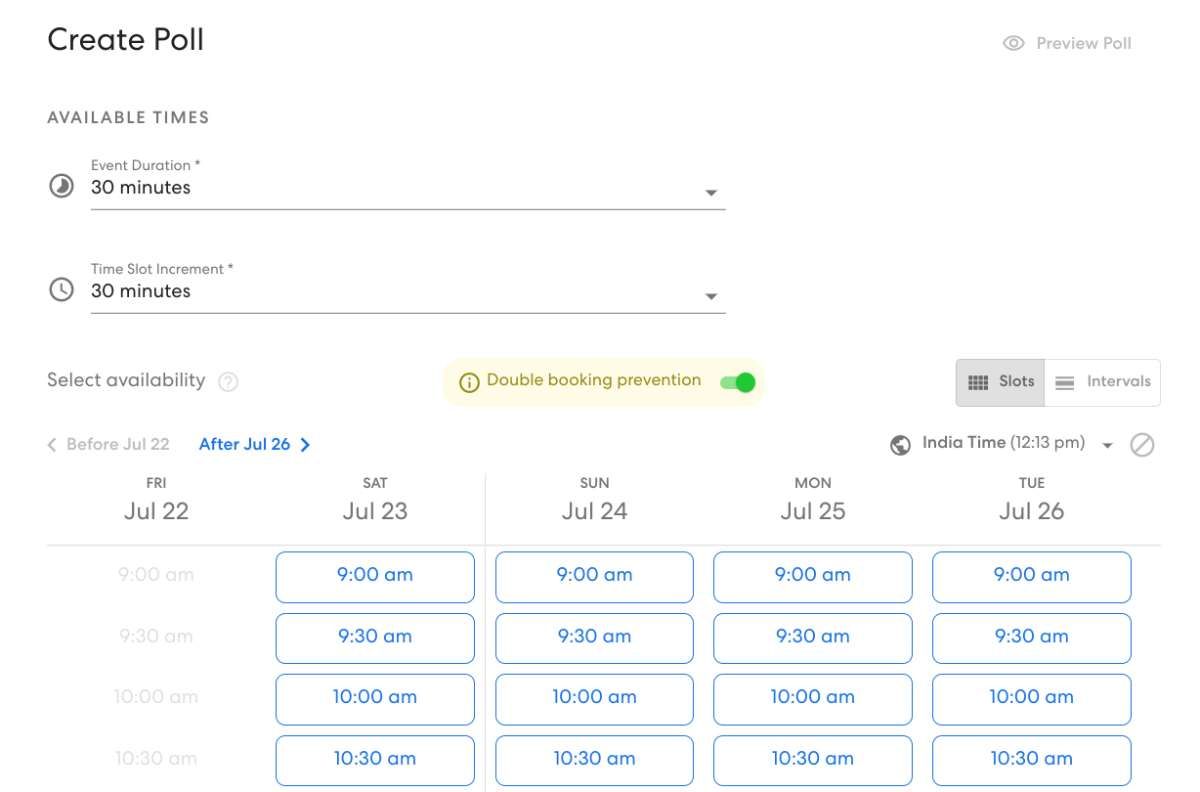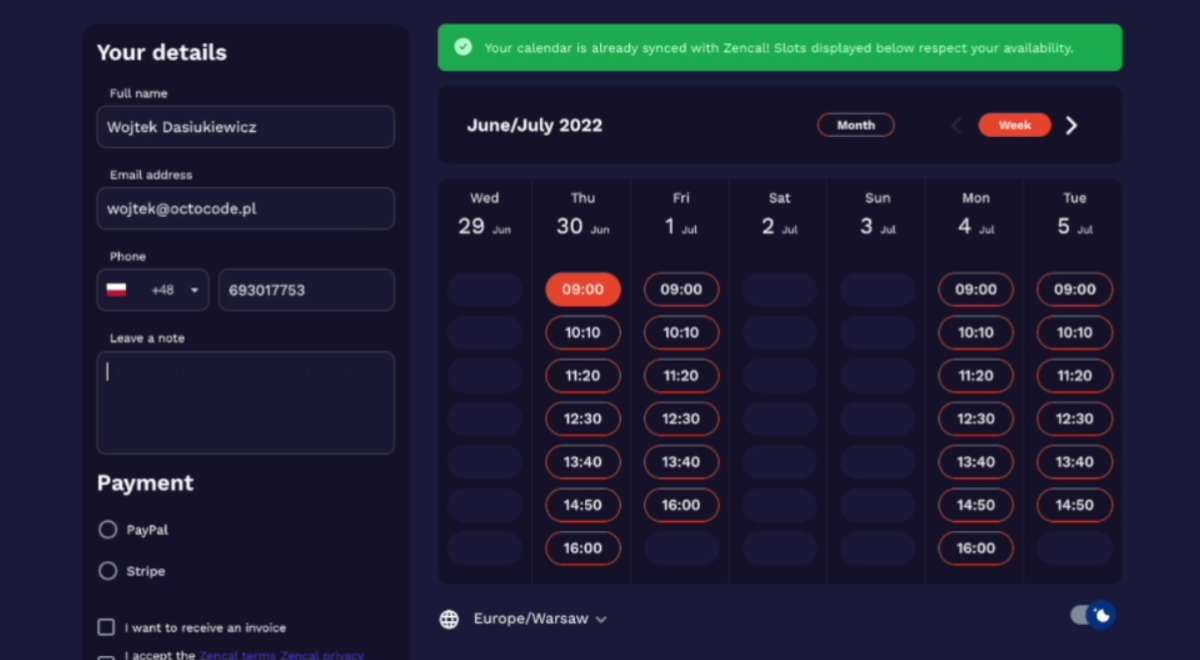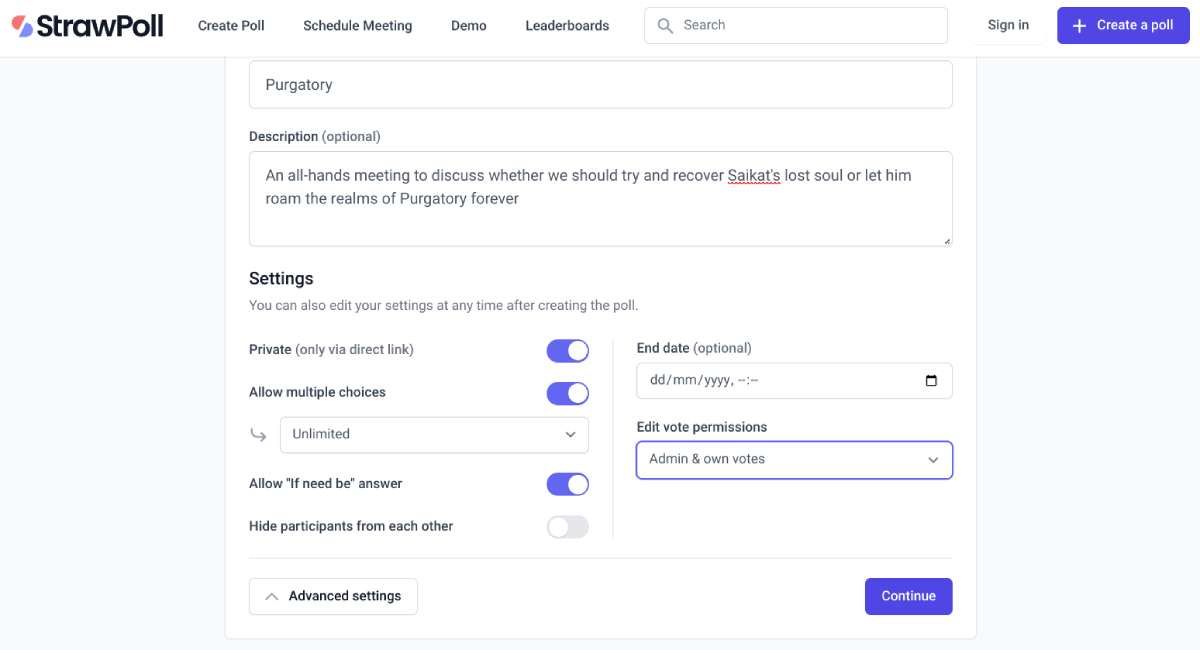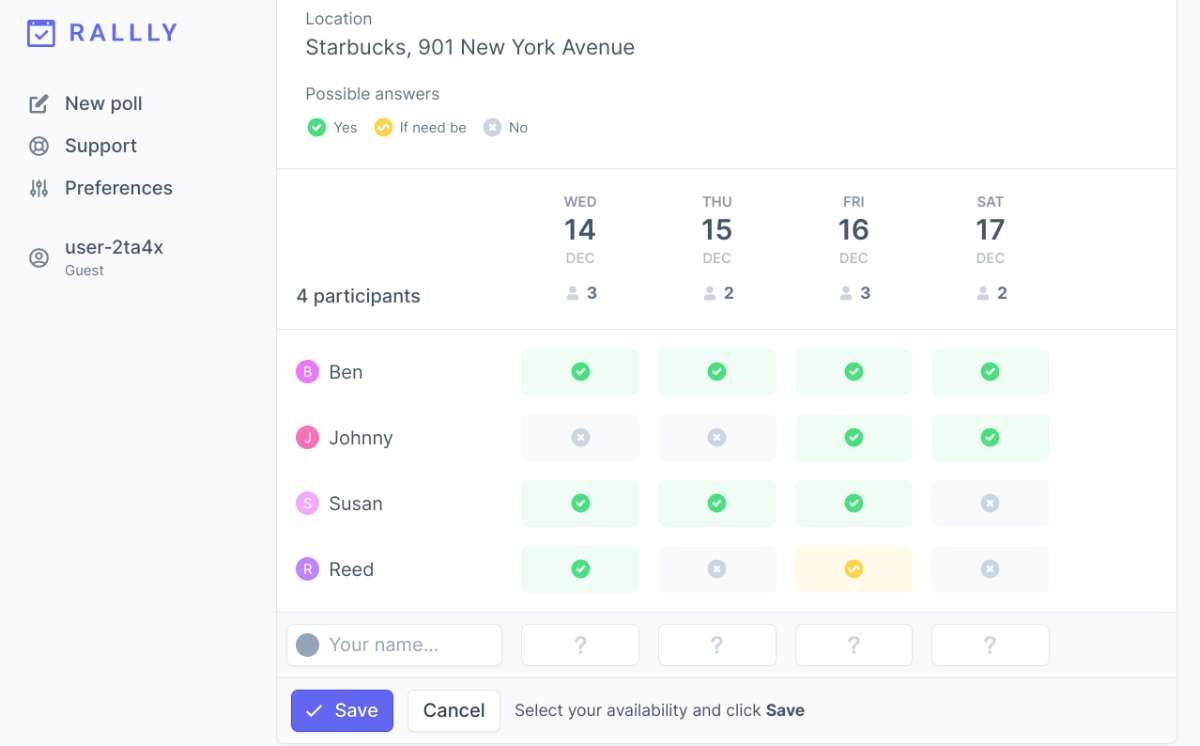It's difficult to figure out when multiple parties are free at the same time for a meeting, whether online or offline. These meeting scheduler apps make it easy to find a common time slot or share your free slots for others to agree.
Today, most companies use Calendly to schedule meetings, with links where everyone gives their preferred time slot. But while that's fine for enterprises, private individuals and small teams don't want to pay for such a feature. Thankfully, there are some excellent free alternatives to Calendly with which you can find the best possible time to meet at everyone's convenience.
1. ZCal (Web): Best 100% Free Calendly Alternative
ZCal's mission seems to be to drive Calendly out of business because it offers the most important features of Calendly for free. The makers have also specifically said it would remain 100% free forever, and they won't show ads.
The app works with both Google Calendar and Outlook Calendar, importing your schedules from multiple calendars. When you create a ZCal invitation, you can add a name, location (or video conference link), description, cover photo, and a welcome video.
You can make unlimited 1-on-1 invites, group invites, or meeting polls. Meeting polls are how you find out when everyone is free by asking them to vote on time slots. Set the available date range, and select half-hourly slots that work for you. Once everyone votes, you'll get a simple analysis of the most voted time slots so you can fix the meeting.
ZCal also makes you create a personal profile when you sign up, with a bio and links to your LinkedIn and Twitter. The idea is to make it more personal. That's also the thought behind the welcome video, a short message you record on ZCal to entice participants to join the meeting.
2. ZenCal (Web): Best Meeting App for Individuals to Share Their Schedules
If you're an individual who is selling courses, or a consultant selling hourly sessions, you need an online page where clients can see your availability and choose a meeting time. ZenCal is the best free app for this, with a slew of powerful features. And like ZCal, the makers of ZenCal note that it'll be free forever for individuals and small teams.
Once you register for ZenCal, you can import unlimited calendars from Google Calendar and Outlook, creating a universal calendar within ZenCal. You can also set regular working hours so clients know your available schedules. If you schedule an event in your other calendars during work hours, ZenCal notifies you about the update so you can block that slot.
In the end, you get a professional-looking page where clients can read a short profile about you, a description of the session or meeting you're offering, and book a time slot. ZenCal offers many advanced features like payment integration for Stripe, email and text reminders, and more.
Apart from this, ZenCal also works as a great tool for finding common meeting slots with your team. You can add multiple teammate calendars, view calendar overlays for quick scheduling, and postpone and reschedule meetings.
3. StrawPoll (Web): Quickly Take a Detailed Poll About Preferred Times
StrawPoll is a no-signup toll to take a variety of polls, but the makers specifically boast of its ability to schedule meetings quickly and efficiently. In our tests, StrawPoll worked seamlessly, so it gets a thumbs-up as a quick online meeting scheduler, especially for a large number of people.
Click the "Schedule Meeting" option in StrawPoll, and you're ready to go. Add a meeting title, an optional location, and a description. In advanced settings, you can make the poll private for those with a direct link, allow multiple choices for the participants (and limit the number of options too), allow "if need be" answers, and hide participants from each other. You can also set an end date and choose who gets to edit votes if needed.
Then, choose your date, and set multiple time slots for each. StrawPoll has a handy template you can use to fill multiple slots in one click. Finally, share the link with participants, or generate a QR code if you want to put up a printout in a common area.
The final result is easy to interpret for anyone and will show results in a simple table. You can see a demo of StrawPolls staff choosing when to have a party. In our opinion, it's one of the best sites to make online polls.
4. Rallly (Web): Best Mobile-Friendly Meeting Poll Creator
Of all the meeting scheduler apps listed above, and several others that we tried, Rallly was the most impressive to use on phones, both as a creator and recipient. On top of that, Rallly is open-source, free, and ad-free. If you're concerned about privacy, you can also run it on your server.
The app requires no registration to get started, so you can quickly create your new event. Add details like meeting name, location, and description, and then select dates. You can also add time slots on those dates if you want (best used with week view) or keep them full-day (best used with month view). Add your name and email to get the admin login information sent to your email, and you're ready to share the link with others.
Recipients get three options to reply: Yes (green), If Need Be (yellow), and No (grey). Once everyone has answered, you'll see the results in a simple table. Participants can also leave comments on your poll, adding their names so you can identify them. But again, no registration is required for this.
Rallly also lets the administrator or creator change the poll mid-way. You can update the poll with new details or options so that people can re-vote and come to a conclusion, without having to open a new link. And in a cool move, the app lets you export all your data as a CSV file, so you can crunch numbers in a spreadsheet if you have many participants responding.
5. Meeting Scheduler for Gmail (Chrome): Easiest Meeting App for Google Users
If your calendar is Google Calendar and your inbox is Gmail, you can stay within the Google ecosystem with this nifty tool to find the best meeting times. Meeting Scheduler for Gmail connects with your Google Calendar so you can share your available timings from within a Gmail compose box.
Once you install the extension, the first thing is to set up your general availability timings, which will be the default settings for all invitations. You'll get a pop-up to set details when you click the Meeting Scheduler button. Then, you can add a meeting name, a location (with a link as a button), duration, and even a GIF. List your availability dates in the final step.
Meeting Scheduler for Gmail will check the dates, your availability timings, and your Calendar schedule to create a list of time slots you're available at. Then, when the recipient gets your email, they can click a link to visit a page that shows these available slots. Once they choose the slot they want, the meeting is automatically scheduled in your Google Calendar, and you and the recipient are confirmed as participants. It's convenient and quick!
Now, you should know that some of the best extensions for Gmail offer this feature in their enhanced suites. But generally speaking, this requires a paid subscription to powerful Gmail add-ons, or you'll get extensions that do many other things you don't want. Meeting Scheduler for Gmail does just that, is entirely free, and is supported by a big enough developer to stay active for a long time.
Download: Meeting Scheduler for Gmail for Chrome (Free)
Think About Recipients, Not Yourself
Hopefully, with so many different ways to find a common time slot that works for everyone, it should be easier for you to set up a meeting that everyone attends. But with all of these tools, ask yourself which one your recipients will find best to use.
Some people aren't inclined to sign up for services just to click the available slots. Others live by their calendars, so they appreciate an app's extra features. So it's just as important to know your recipient's needs when choosing the right app for you.

